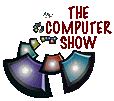HOME
By Al Giovetti
Price:
Genre:
Release:
Developer: Papyrus, David Kaemmer
Lead Artist:
Programmer:
Producer:
Matt Sentell
Publisher: Sierra
Phone:
Website:
Requirements:Pentium 90 MHz,

Grand Prix Legends
History
Grand Prix Racers are 1100 pound cars with over 500 horsepower that achieve speeds of over 200 miles per hour. The engines are between 6 and 12 cylinders and are 1.5 to 3.0 liters. The smaller engines are supercharged a process of passing compressed cold and therefore very dense air mixed with a fine gasoline spray into the engine. The larger engines take the air normally and mix it with the gas.
In 1967, the classic era of the Formula One racing season, there were no wings to hold these rockets down to the road and the tires had the normal tread of street tires not the lower profile tread used today. Going airborne was much more common in these days. And brakes were prone to failure and overheating.
The people who drove these cars are legends. Legends like Graham Hill, Jackie Stewart, Emerson Pitapaldi, Jimmy Clark, Bruce McLaren, and Dan Gurney. The tracks of the era were long, fast, and deadly. Most of all the tracks today are tamer with more turns to prevent the high speeds on the straight-aways. Many tracks are just no longer used because of the danger.
The people producing this game are driving sim legends. Kaemmer founded Papyrus in 1989 developing the Indy 500 simulation published by Electronic Arts. Papyrus produced the immensely popular NASCAR 2 game.
Company Line
Game Play
The first person perspective view will be from the perspective of the eyes, so that you see the arms and the hands on the wheel. This view will allow you to view the wheels of your own car bouncing and turning to the track.
The new game physics model everything, "even gyroscopic torques." The game physics are entirely new. Even though the interface resembles that of NASCAR 2, it is completely redesigned under the surface. The engines were very powerful for their weight, achieving in excess of 200 miles per hour, but with a much less stabile platform in the suspension and aerodynamics than modern cars.
The cars will slide around more, like they did in 1967. The cars had no wings to hold the rear wheels on the ground. While going through a turn, you need to turn the wheels away from the curve since the rear end is sliding out so far.
The game will have 11 tracks patterned after the 1967 racing season, including Europe, US, Mexico, South Africa, and Canada. The research has been extensive, down to getting data for tracks as they were during 1967, including bankrupt and changed tracks, licenses to use dead drivers' names, and other things.
Plot
Graphics
The graphics have a resolution of 640 x 480 pixels with 16-bit color. Support for 3D accelerator cards and a minimum configuration of a Pentium 90.
Animation
The new physics engine models the movement of the body of the car differently from the four wheels with the suspension elements connecting them, which is more like how a real car moves. The Grand Prix cars have no fenders and the bodies are very small so these are the cars to showcase this new technology. Wheels lift off the ground independently due to bounce. Brakes lock, with the commensurate slides. Cars explode in a ball of fire when they come off the track. In 1967 cars often held 75 gallons of gasoline in highly combustable tanks, since there were no pits.Voice Actors
Music Score
Sound Effects
Utilities
Compare to
Multi-player Features
The game itself was created first and foremost as a multi-player game, one to work in concert with other computers. The new engine will support up to eight network players.Cheats, Hints, Walkthrough
Journalists
Publish your own review or preview, just send us the text by email.
